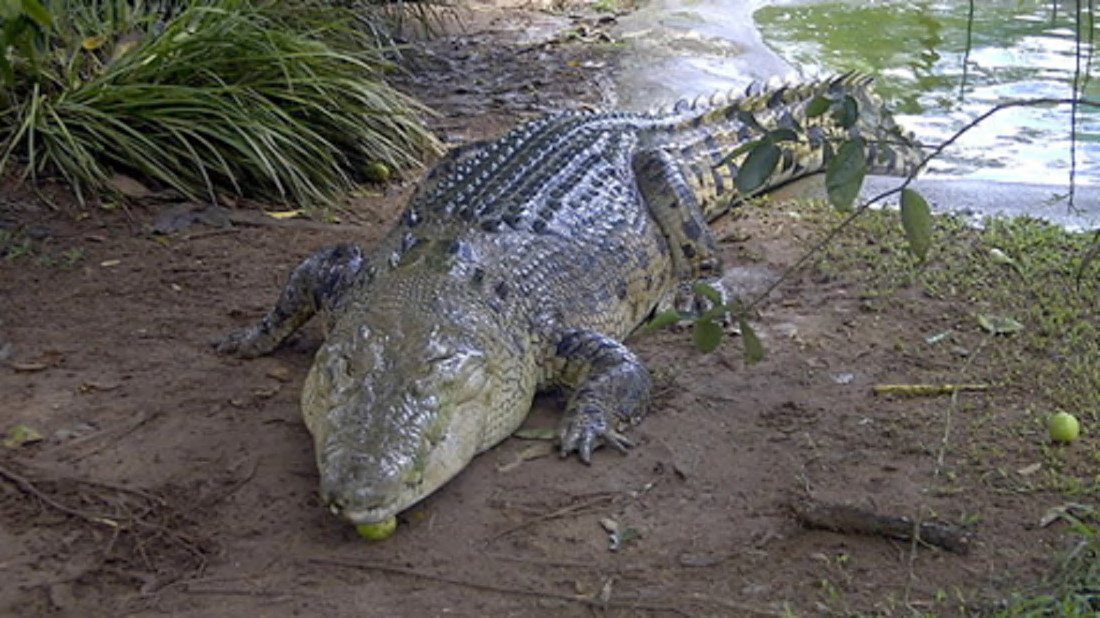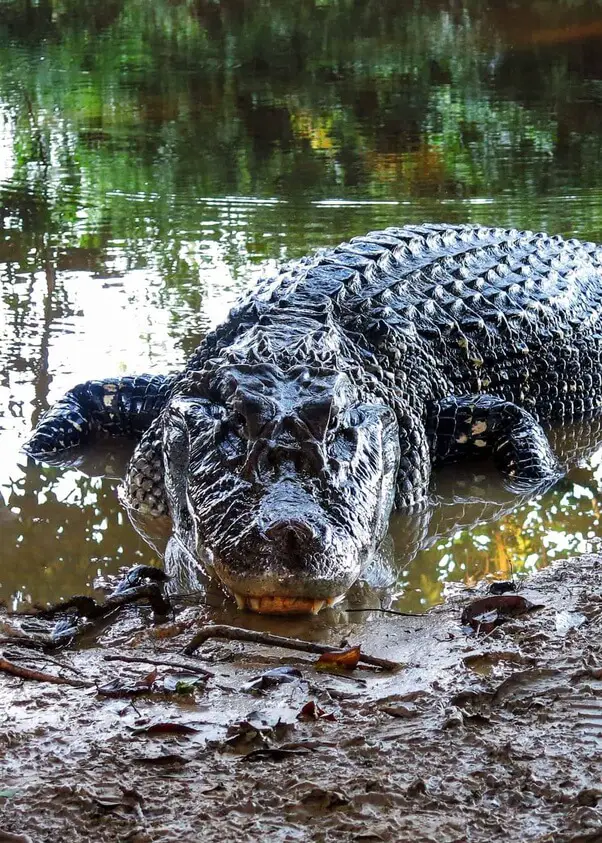Crocodiles are aquatic reptiles, and among the most feared carnivores on Earth, because of their size, big powerful jaws and aggressiveness.
They are successful predators – once they were living alongside the dinosaurs. After the Chicxulub impact, which happened around 66 million years ago, the non-avian dinosaurs were gone but crocodiles managed to survive
When we talk about an animal that hasn’t changed for over 2 million years, that has survived the most adverse of situations and extinctions, and that remains the most flawless and superior of its kind, everything is interesting.
So, here are 10 Interesting facts about Crocodile you should know.
1. A crocodile can go without food for 3 years!
Crocodiles are very efficient at storing energy and can remain almost motionless for very long time periods.
Pair that with the fact that they don’t need food to maintain their body temperatures (They soak in the sun to warm up.) and you have an animal that can go without food for 3 whole years!
Of course no known crocodile has been forced to go this long, but it sure helps to have such endurance when large prey like wildebeest only come around a few times a year.
2. Crocodiles Can’t Chew

Yes, it’s true. Despite their fearsome reputation, crocodiles can’t chew. But that’s not to say they won’t kill you—in fact, death by crocodile is probably more agonizing precisely because they’re unable to masticate.
You see, crocodiles’ jaws aren’t wired to move sideways, so they can’t grind food down in a traditional chewing motion. What they can do, however, is rip off large chunks of their prey and swallow those chunks whole.
If you’ve ever noticed the distinct manner in which crocs eat, now you know why – they’re ripping off pieces of meat.
You can see a pretty good example of how that happens in this video. It’s rather graphic, so if you’re squeamish, please bypass it.
3. The truth about crocodile tears
For awhile the myth that crocodiles “cry” when eating was thought to be nothing more than well…a myth.
Only later did scientists conduct experiments on a variety of crocodilians including alligators, caimans and crocodiles and discover that these creatures truly do “cry” when eating.
While it isn’t known why crocodiles have now been proven to tear up when they eat their food.
4. Crocodiles are not Immortal.
Some souces claims the saltwater crocodile – the largest croc species in the world – is the “poster child” of agelessness, and that the big reptile has no recognized lifespan limit.
It’s a myth that crocs and gators never stop growing.
“No, crocodiles don’t grow indefinitely, prevented from exceeding the size of a small moon only because they get killed first by a competitor!” croc researcher says. What’s more, crocs do feel the effects of old age.
Another crocodilian expert, Adam Rosenblatt, told that while the aging process in these animals is still not fully understood, the evidence we do have “all points to the conclusion that crocodilians are not immortal and are subjected to natural aging and death processes”.
In the wild, an older, weaker croc is more likely to face starvation or competition, but even in captivity, the animals inevitably die.
As they age, gators and crocs lose strength and overall body condition just like us humans. They tend to lose their teeth, some develop cataracts, and females produce fewer eggs.
5. Champion swimmers

Everyone knows that crocodiles are great swimmers but few know just how good they really are.
These predators are fast, able to swim at speeds of 32km/h which allows them to catch their speedier prey.
They can also hold their breath for long periods of time with 1 hour being the max.
All this mixed together makes for a truly frightening semi-aquatic predator that can take down the likes of fish, antelope, livestock, and sharks.
6. Tail is secret of my Power
Crocodiles use their solid tail to stand upright in the water
You will be surprised by it that the tail of Crocodiles helps more. They can reach speeds of 25 miles per hour by using their tail alone and the tail can help them to swim and stand upright in water for as long as three hours.
However, the same tail is not quite as powerful for them on land. Crocodiles can usually only manage short, rapid bursts of movement with their tail before they tire out.
7. The crocodile’s heart
The heart of a crocodile is truly extraordinary.
This reptile’s heart has an extra valve that allows it to change the destination of blood depending on the requirements of its body.
While its exact use isn’t known most believe it helps with staying underwater for long periods of time, thermoregulation, and digestion after a big meal.
8. Tool using Mugger crocodile
During the nesting season of birds muggers will place branches on top of their heads. Birds looking for nesting materials will be lured in and then SNAP!
The mugger crocodile has earned itself a meal by using a sort of lure.
This behaviour makes the mugger crocodile along with the alligator one of the first reptiles to be found to use tools.
9. Death roll
Many people know that crocodiles use their infamous death roll when subduing prey but I find the general public doesn’t know exactly what it accomplishes.
Crocodiles have been known to use their death roll to subdue prey and/or eat prey. When on the attack a croc will roll over, forcing the victim underwater with its own body weight in an attempt to drown it.
The crocodile will then repeat until the prey animal shows no more signs of life.
Once the prey is down the reptile will use this role to tear the prey into smaller pieces since it can’t chew.
10. The pack-hunting Cuban Crocodile
Many people know that crocodiles are social animals that work together to devour their prey, taking turns tearing it to shreds but the Cuban crocodile seems to have taken this to a whole new level!
This species of crocodile has displayed interesting behaviors that other crocodilians do not.
A colony of Cuban crocs in Gatorland, Florida has exhibited what is strongly suspected to be pack hunting behaviour, working as a group to bring down prey.
This may explain how Cuban crocodiles preyed on now-extinct giant sloths in the past.
